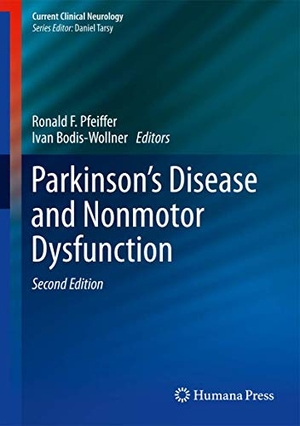Für statistische Zwecke und um bestmögliche Funktionalität zu bieten, speichert diese Website Cookies auf Ihrem Gerät. Das Speichern von Cookies kann in den Browser-Einstellungen deaktiviert werden. Wenn Sie die Website weiter nutzen, stimmen Sie der Verwendung von Cookies zu.
Cookie akzeptieren
Parkinson's Disease and Nonmotor Dysfunction
- Humana Press
- 2013
- Gebunden
- 440 Seiten
- ISBN 9781607614289
The first edition of Parkinson¿s Disease and Nonmotor Dysfunction was published in 2005 to provide a source of detailed information that could be readily accessed by the practicing physician. The widely praised first edition described and explained these nonmotor features that had at that point received insufficient attention both in the medical and in the lay literature. Since the publication of the first edition, awareness and knowledge of the nonmotor features of PD has dramatically expanded, calling for a new edition of this important title. Timely, fully updated and expanded, Parkinson¿s Disease and Nonmotor Dysfunction, Second Edition, offers a state-of-the-art overview of the topic from the
Mehr
Weniger
zzgl. Versand
in Kürze